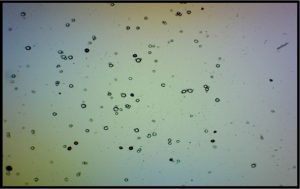
ABSTRACT
Background
Tridaxprocumbens is an herbal plant that has been used for many centuries. It has shown promise in treating various medical ailments, including skin infections, burns, and wounds. The plant has several active ingredients, such as triterpenes, ursolic acid, quercetin, and tridaxin, all of which have potent anti-inflammatory, antibacterial, antioxidant, and wound-healing qualities.
Materials and Methods
Lipid-based nanocarriers called ethosomes have drawn much interest in studying six formulations with varying amounts of ethanol and lecithin created in the study. Numerous criteria, including globule size, shape, zeta potential, entrapment efficiency, and in vitro drug release, were evaluated in detail for the ethosomal formulations.
Results
The study’s findings showed that every formulation had spherical and unilamellar characteristics, with entrapment efficiencies ranging from 57 % to 75 %, globule sizes between 122.6 to 910.3 nm, and zeta potentials between -25.06 to -52 mV. The invitro release tests demonstrated the medication’s consistent, long-term release from ethosomal vesicles.
Conclusion
The results of further evaluation studies indicate that the F5 ethosomal formulation, which contains quercetin as an active ingredient, had the highest levels of entrapment efficiency. The release kinetics were consistent with a Fickian zero-order drug release and diffusion pattern, showing both penetration and prolonged drug action.
